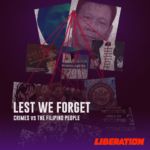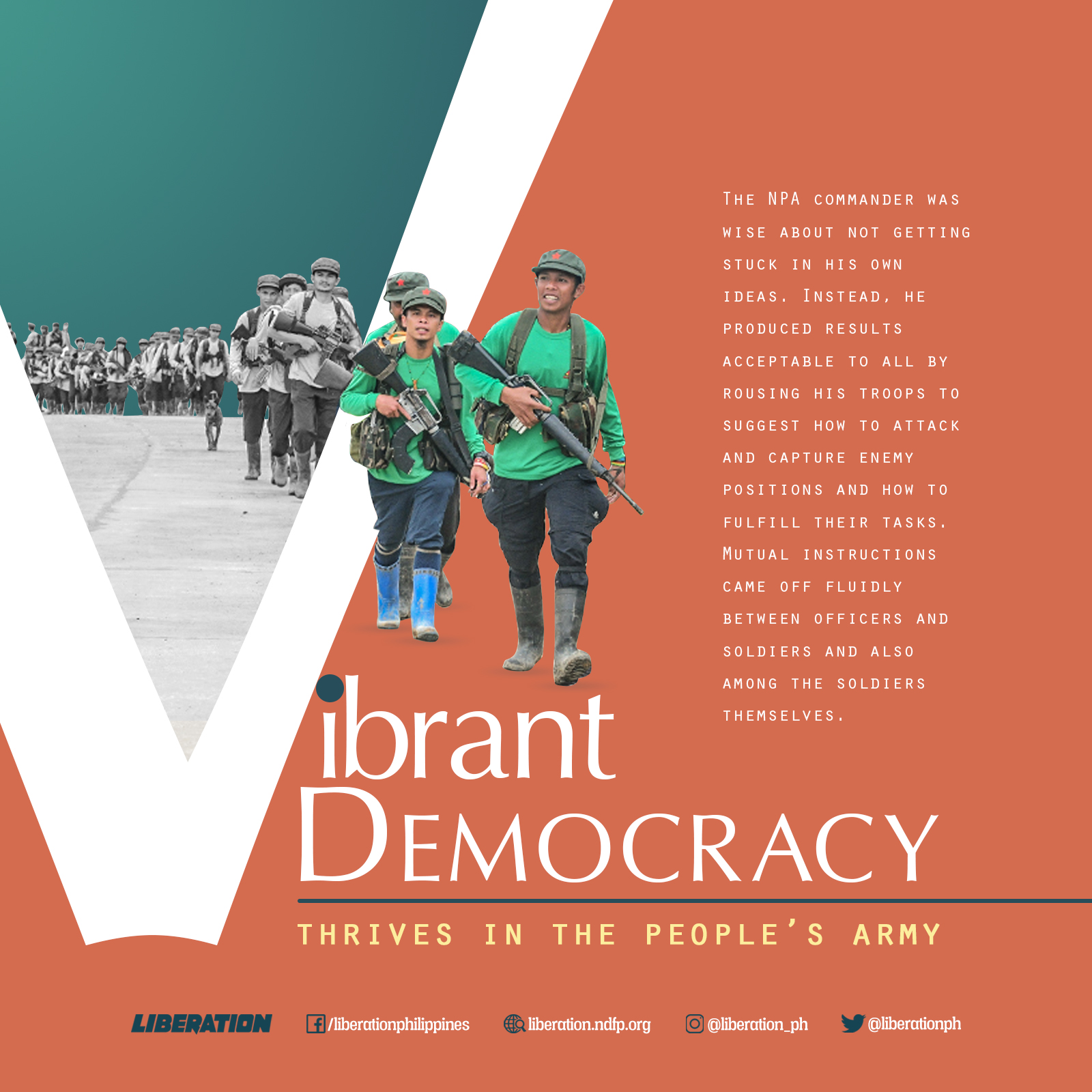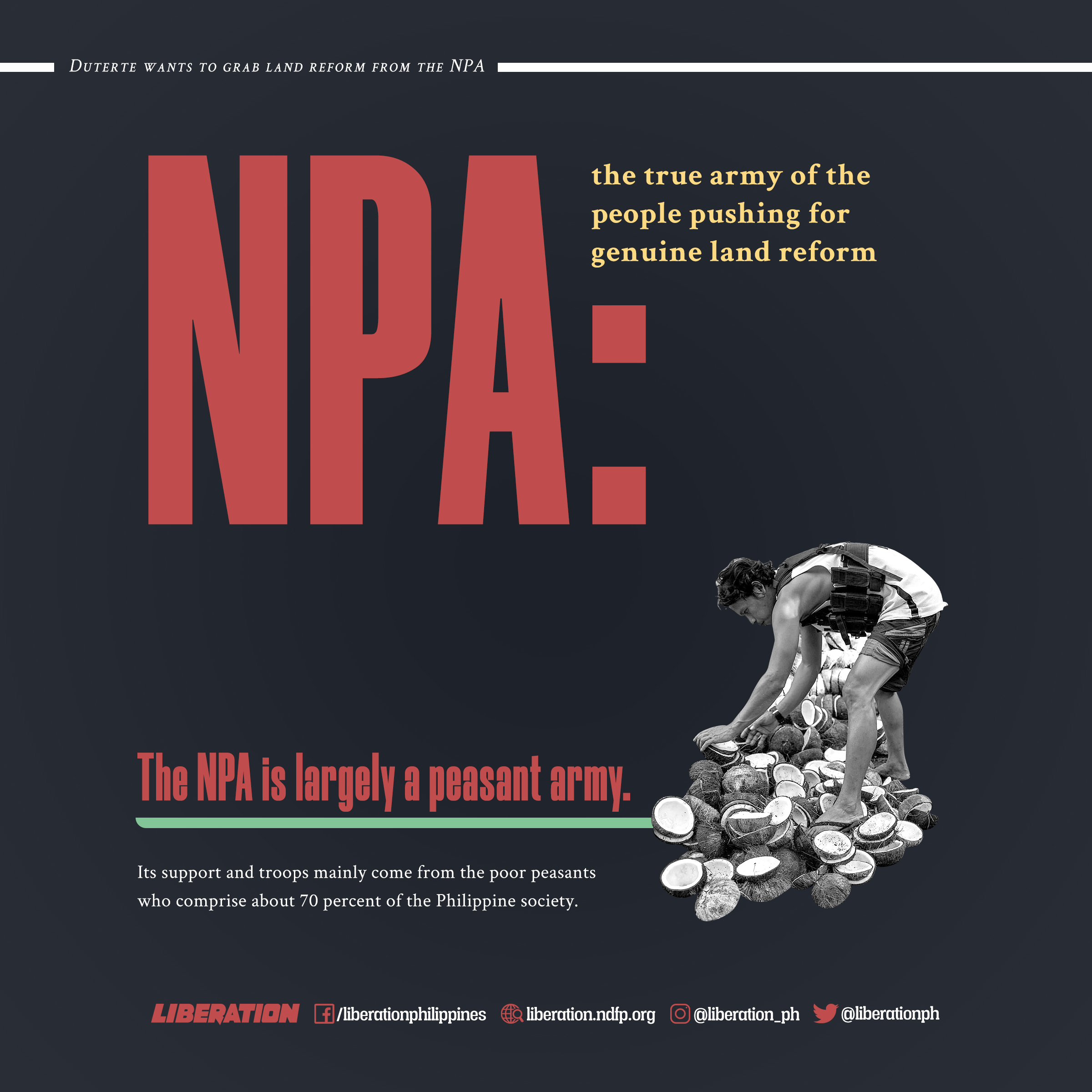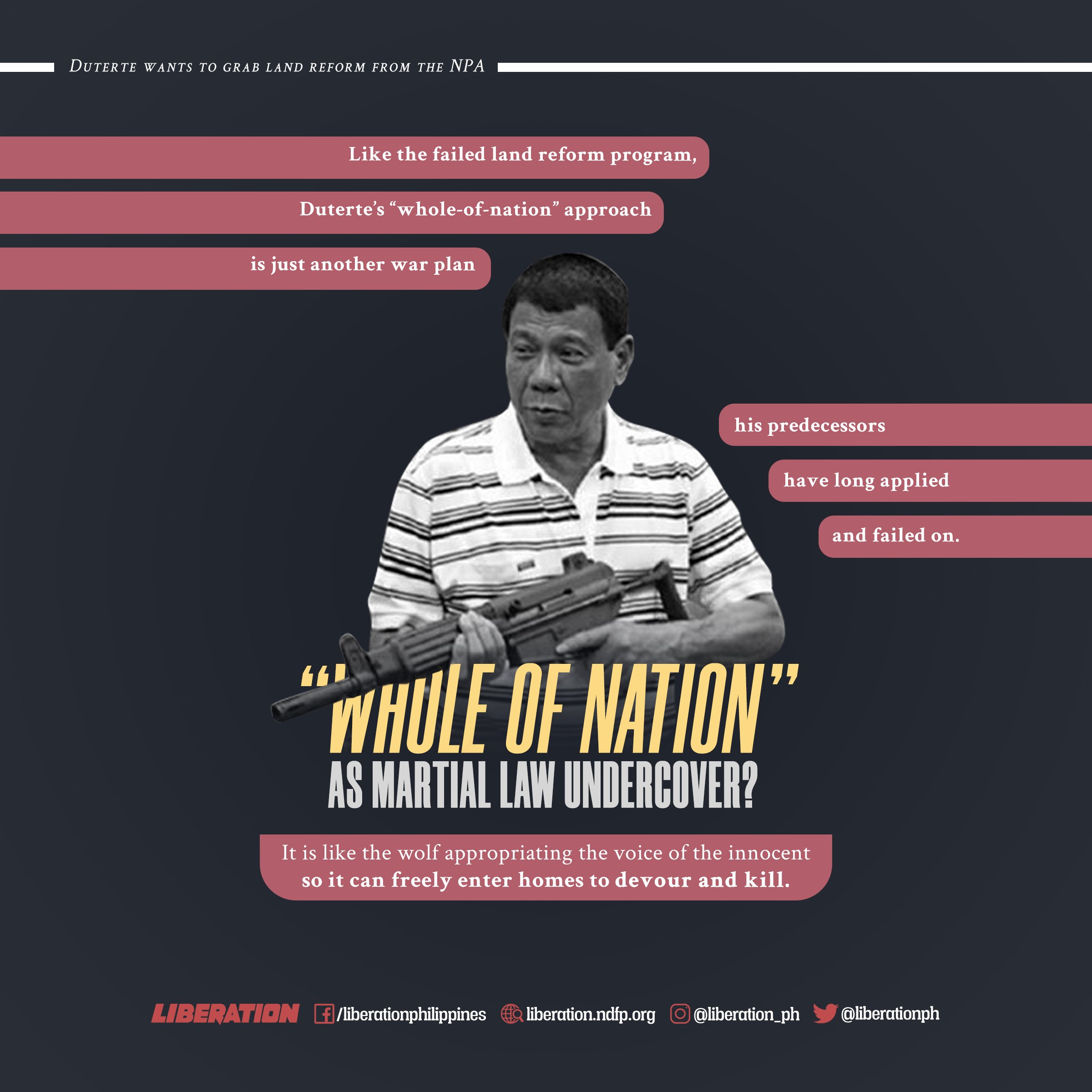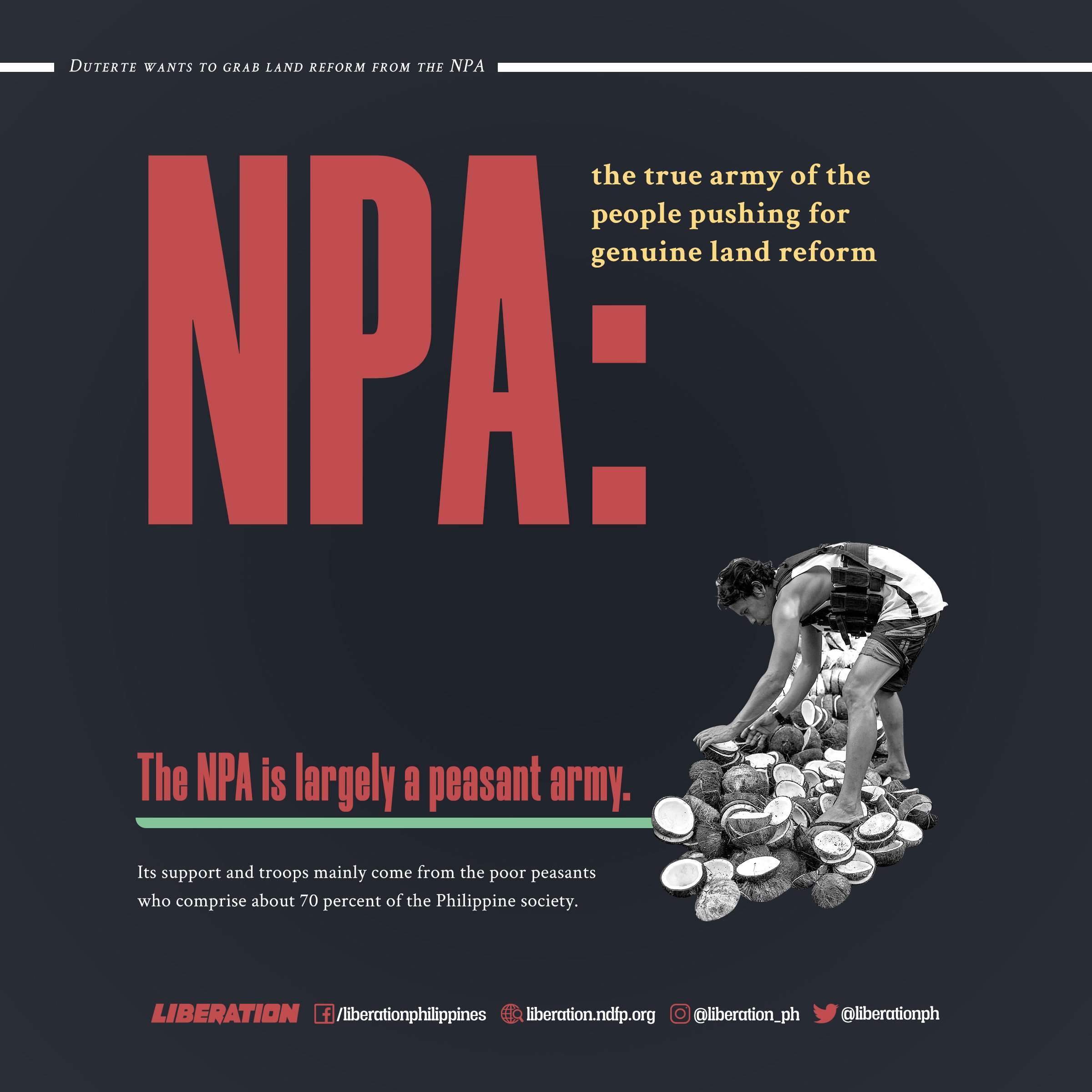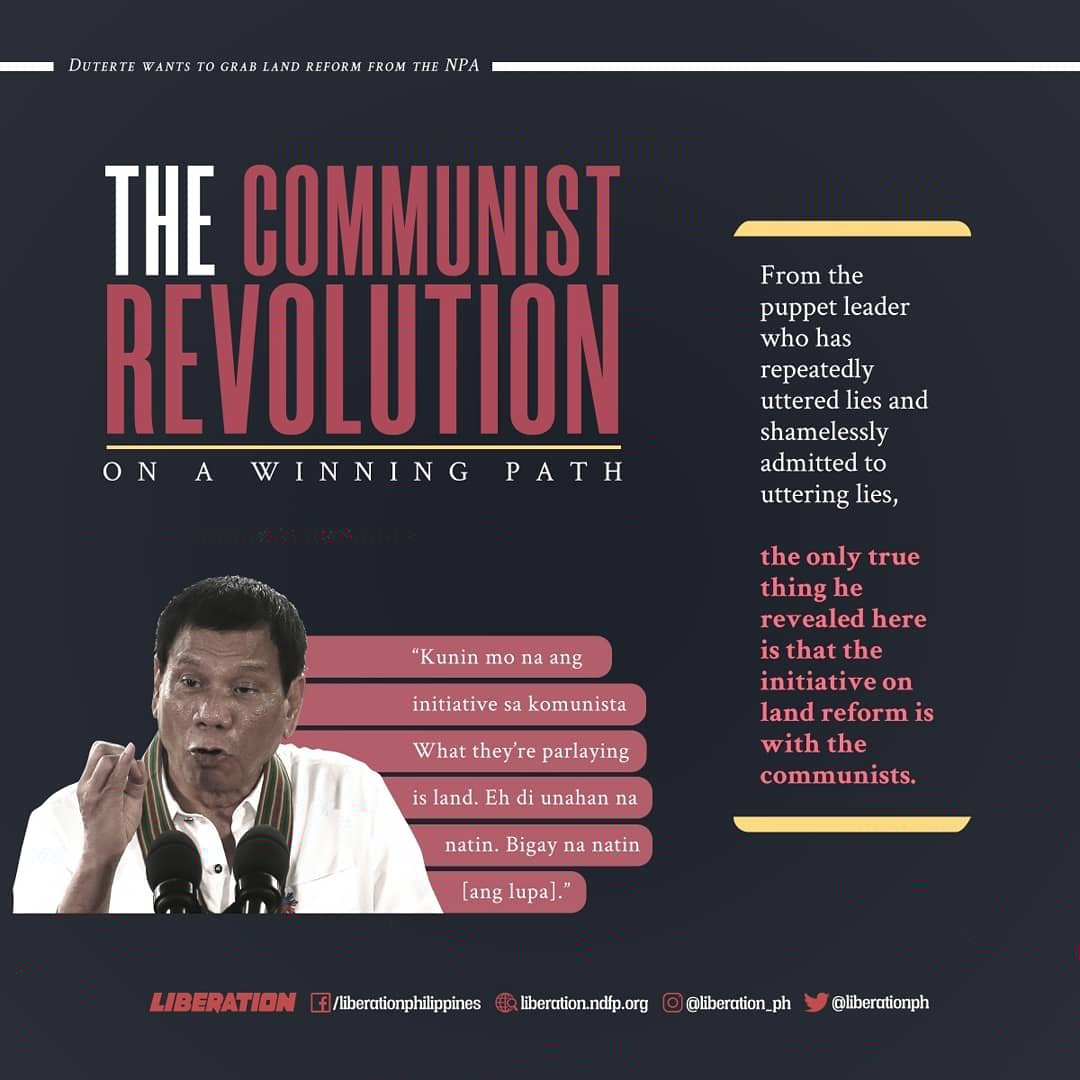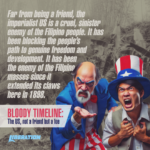Condemn Mass Arrest and Duterte Regime’s Heightened Fascist Drive
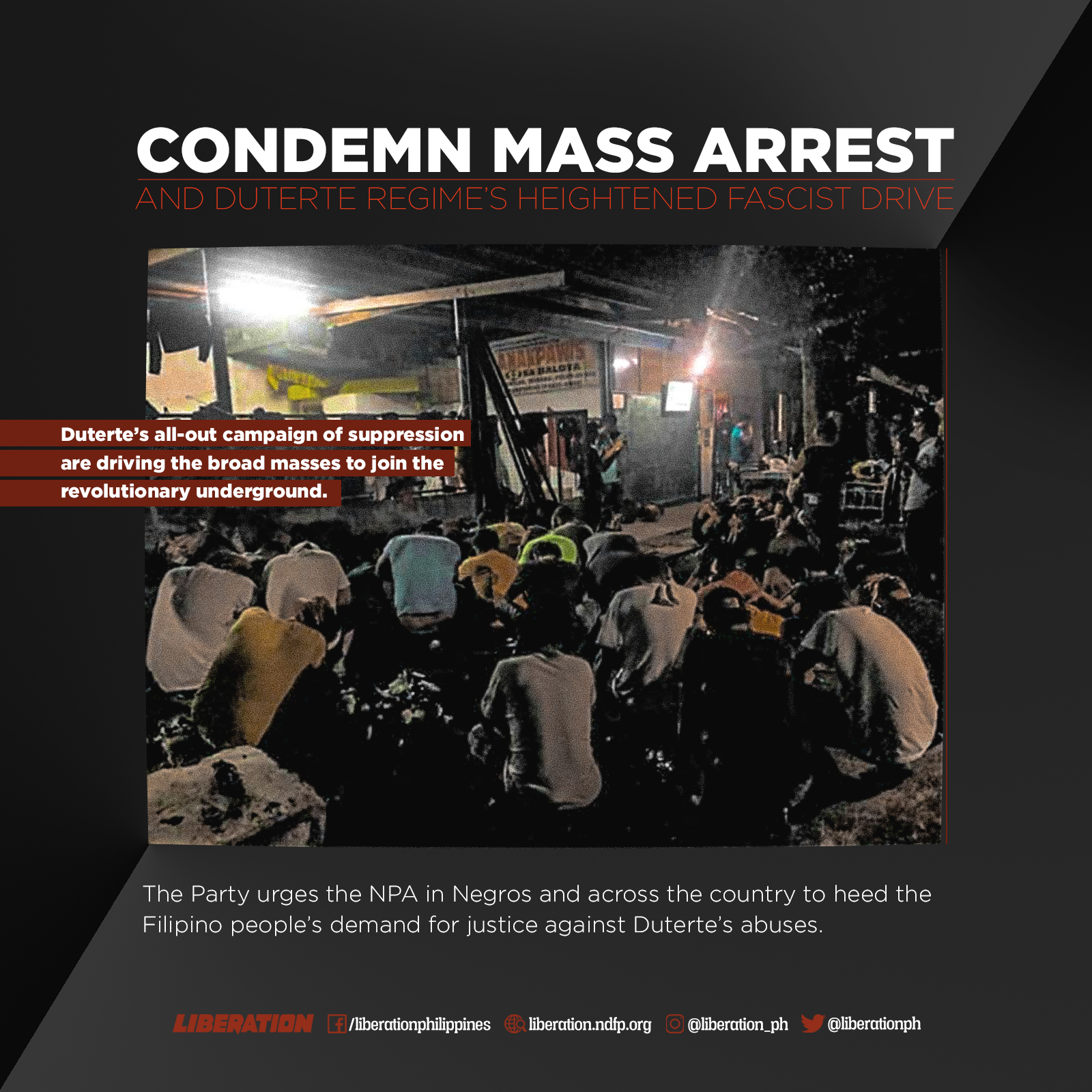
November 02, 2019
https://cutt.ly/GeRnGFQ
The Communist Party of the Philippines (CPP) condemns in the strongest terms the mass arrest of activist workers, peasants, women, and media practitioners over the past few days in Bacolod, Escalante and Manila. Police arrested and detained more than 60 people belonging to various sectoral organizations were arrested. More than five children were also accosted.
The CPP condemns the statement issued by Malacañang which makes the patently false claim that the arrested activists in Bacolod City were members of the New People’s Army (NPA). This brazen lie aims to conceal the martial law crackdown on mass-based organizations.
The mass arrest marks a heightening of the Duterte regime’s fascist drive against all democratic forces. It is a brazen display of force and abuse of state powers. It seeks to terrorize the people and their democratic forces. It aims to silence the broad masses against worsening oppression under the Duterte regime.
The mass arrest is an unbridled exercise of military and police power in Negros, which together with Bicol and Samar, are under Duterte’s Memorandum Order 32. This is combined with Executive Order #70 through which Duterte has established a virtual civil-military junta and placed the entire country under undeclared martial law. The mass arrest is a dress rehearsal for a nationwide crackdown against all democratic forces.
Duterte’s all-out campaign of suppression are driving the broad masses to join the revolutionary underground. In the face of Duterte’s brutal fascist drive, many are encouraged to join the New People’s Army or seek its protection.
The Party calls on the Filipino people and the broad democratic forces to condemn the Negros mass arrest and demand their immediate release. They must firmly oppose the attempt of the fascist regime to take away completely the people’s democratic rights. They must rise up in protest, continue to defend their democratic rights, especially their right to organize and to oppose government treachery, corruption and tyranny.
The Party urges the NPA in Negros and across the country to heed the Filipino people’s demand for justice against Duterte’s abuses. They must exert all effort to mount tactical offensives against the AFP and PNP units, especially those behind fascist crimes.
#DuterTerorista
#FightTyranny
—–
VISIT and FOLLOW
Website: https://liberation.ndfp.info
Facebook: https://fb.com/liberationphilippines
Twitter: https://twitter.com/liberationph
Instagram: https://instagram.com/liberation_ph

